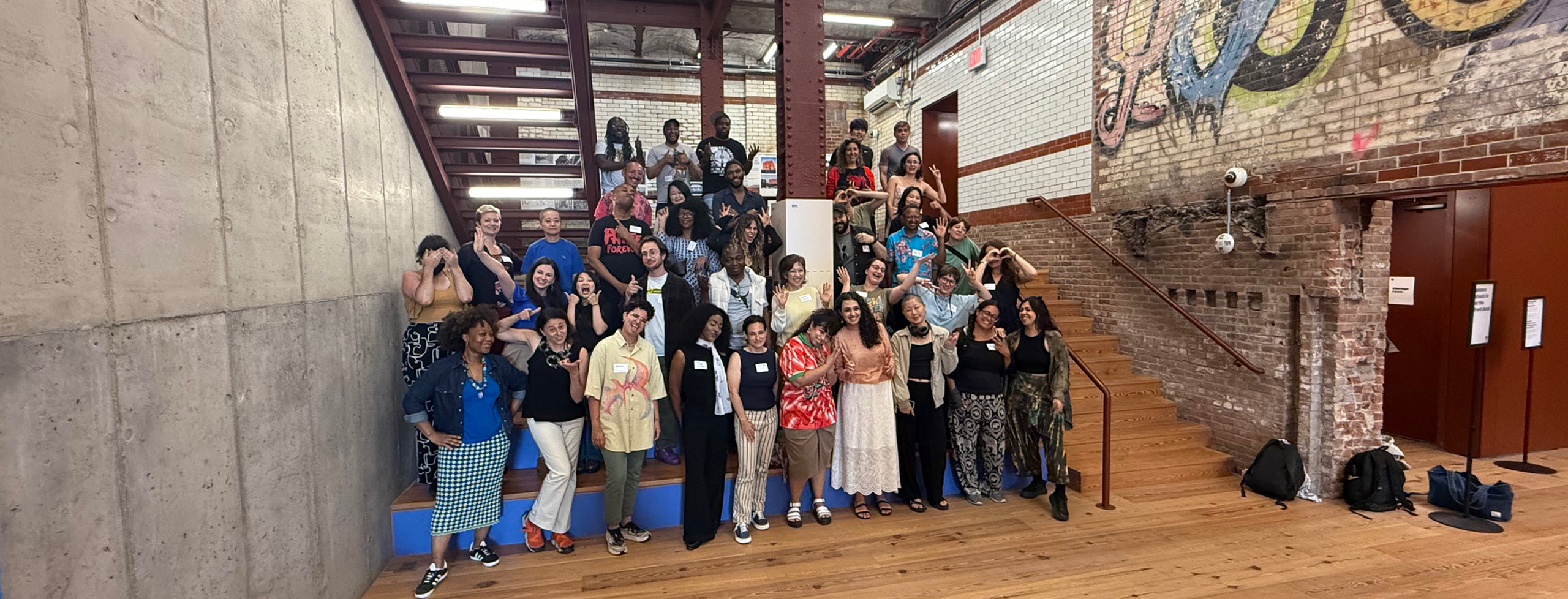
Experience NYFA’s Artist as Entrepreneur Program
NYFA Intern Talia Czuchlewski on what the program gives participants, and why it goes beyond professional development.
When I started my internship with New York Foundation for the Arts (NYFA) this summer, I had no idea that two months in I would be surrounded by the excited roar of 36 artists in a power plant-turned-art fabrication space formerly known as the “bat cave.” Thanks to a partnership between Princeton Internships in Civic Service (PICS) and NYFA, I recently had the opportunity to observe and support NYFA’s Artist as Entrepreneur program, hosted by Powerhouse Arts in Brooklyn, NY.
This free 3.5-day intensive was open to New York City-based artists of all disciplines, and involved a deluge of valuable information on how to run an arts practice as a business. This included sessions on strategic planning and goal setting, fundraising, marketing, finance, cultivating opportunities, writing artist statements and bios, and even individual work sample reviews by experts in all represented disciplines.
My role as an observer and NYFA intern allowed me to both absorb the content of the program as well as reflect on the impact it had on myself and the participants. After 3.5 days alongside this incredible cohort, here is what I learned from my first look at NYFA’s Artist as Entrepreneur program.
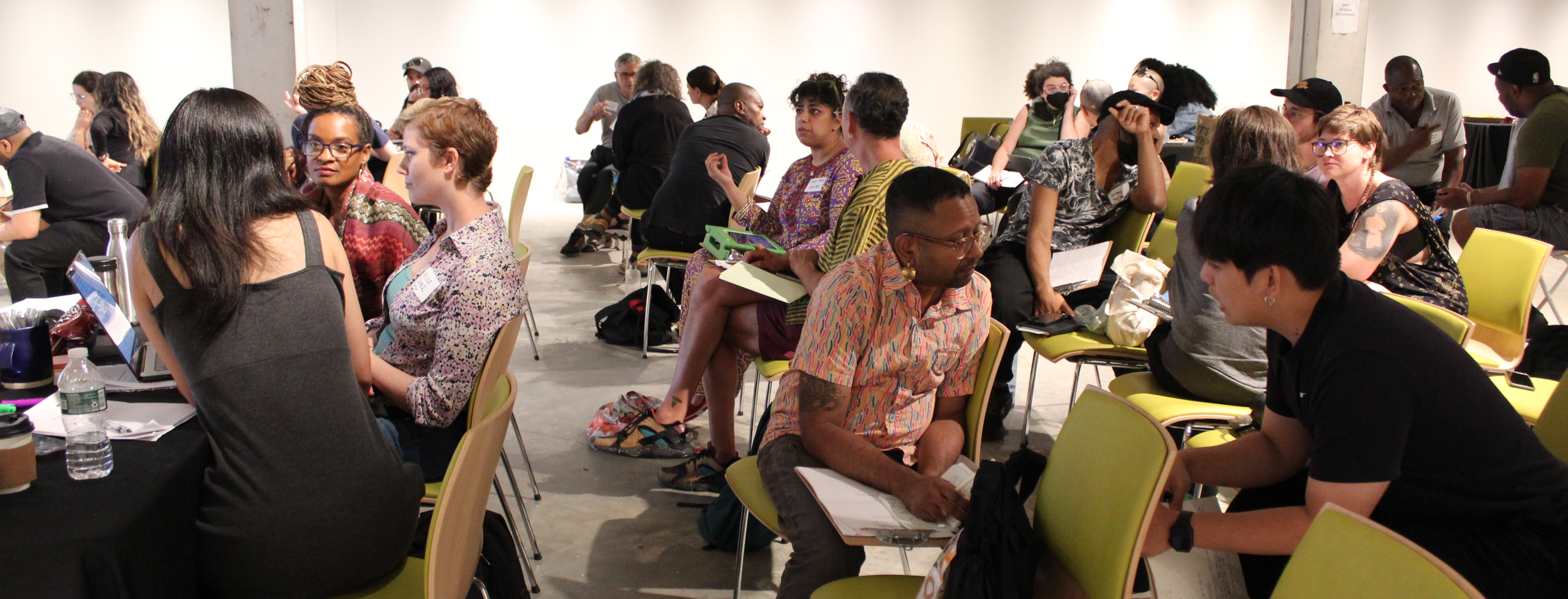
1. The community is as important as the content.
In the poll the artists completed as a closing exercise, the answers to “What was the biggest takeaway from the program?” revolved around one theme: community. “Resource sharing” and “networking” were both popular responses, and the cohort described the weekend most frequently as “motivating,” “supportive,” and “inspiring.” This trend was also corroborated by my conversations with participants throughout the weekend.
Filmmaker and screenwriter Dani Hanks expressed enthusiasm for the potential to collaborate with artists of different disciplines “if I ever need a prop designer or costumer.” They were also thrilled to feel like they could provide value to the group in turn. Says Hanks: “I feel like I can contribute to the conversation about rejection, and distancing yourself from it,” referencing an earlier discussion of how demoralizing it can be to apply to so many opportunities without seeing an acceptance letter.
Jeremy Martin, artist and art therapist, also loved the community-building aspect of the weekend, saying: “Besides art school, where else do you get to be in a room with 35 other artists?” Photographer and filmmaker Chen Xiangyun agreed that the community was a highlight of the program, especially connecting with the immigrant artists present.
In a panel discussion about cultivating arts opportunities, the speakers gave similar enthusiasm for community-building. Courtney Harge, Lead Consultant at CHarge Advisory Hub, gave powerful advice about creative relationships. “Most of my most lucrative opportunities have been because I just started talking to people I liked,” she told the group. “The best things that happened to me are things I never saw coming—couldn’t dream up.”
Indeed, the nature of the program made it a perfect environment for resource sharing and inspiration. For example, during the work sample group reviews, one musician shared that she was having a difficult time finding the right opportunities for her style of music, a blend of singer-songwriter and more electronic sound. The reviewers and artists in the room instantly started brainstorming organizations and events they knew of and ended up with a list of several she could look at right away. To me, these informal moments of collaboration and support were some of the most inspiring, and important, of the program. As Harge said in the panel discussion, “your art practice is not more important than your creative relationships.”
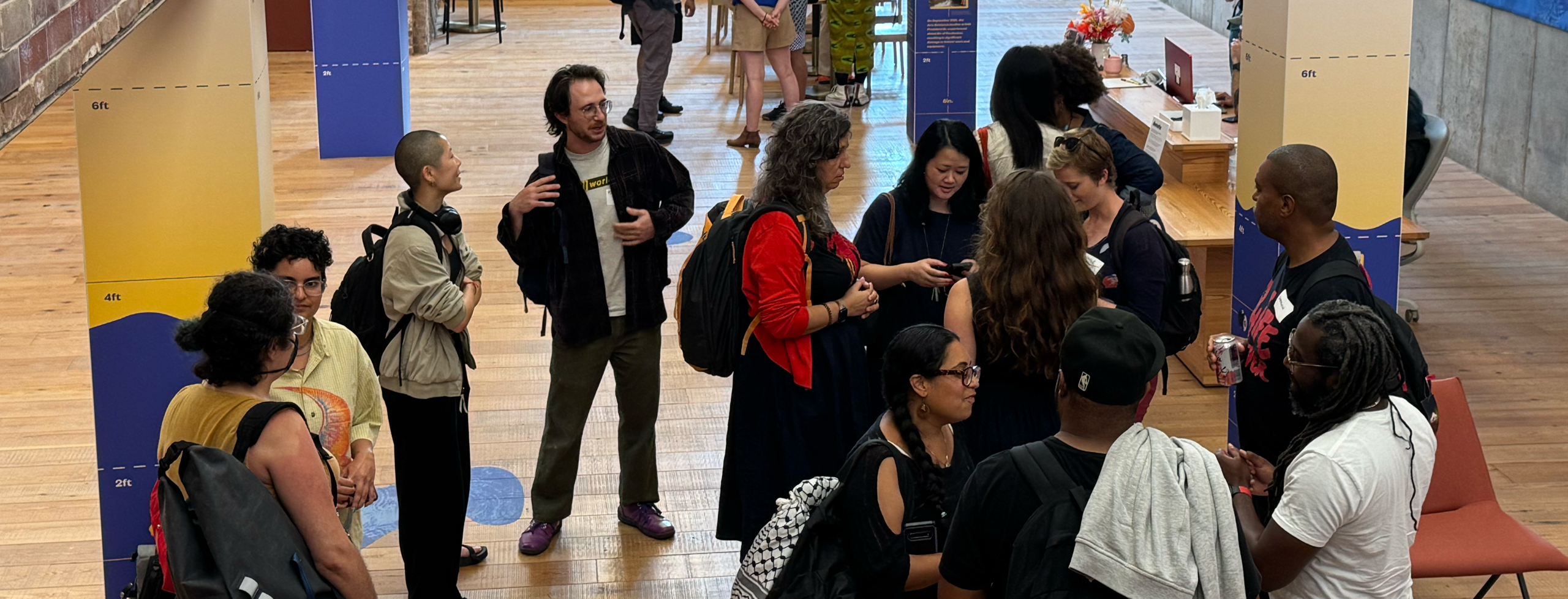
2. The program is much more than professional development.
The musician who found herself between traditional genres was far from the only boundary-pushing member of this cohort. Most, if not all, of the artists were exploring new ways of creating, mixing disciplines, traditions, identities, and mediums. The group raised many questions involving how to incorporate multiple modes of work into an artist statement, or how to market non-traditional works through traditional opportunity channels.
This exploration of new ways to create art also crossed over into a more global exploration of new ways to be an artist. As the weekend went on, I continued to hear discussions that spoke to this larger shift. For example, during the first session on strategic planning, the group was divided over whether to categorize the extant arts system and infrastructure as an opportunity or a roadblock to success. A similar debate occurred over the use and increasing prevalence of AI. Later, Rus Garofalo, founder of Brass Taxes, spoke in his presentation about the importance of demystifying and breaking taboos about the world of taxes and finances. He stressed that knowledge about where your money was going, personally and entrepreneurially, was crucial both for your own empowerment and that of the community around you.
This wasn’t the only taboo presenters called out in their workshops. The “starving artist” trope was all too familiar to the group, and several artists shared that they rely on their art practice for crucial income. When one artist asked how other creatives manage to make a sustainable and robust living, Heather Bhandari, program director at the Foundation for Contemporary Arts, divulged the “dirty secret:” most artists have a day job, more than you’d think, and no one talks about it.
Having this space to talk about the harder parts of being an artist is one reason I believe so many artists used the word “refreshing” to describe the program in their reflections both to me and to the group. It was a chance to re-group and debrief with peers who face the same struggles, and to celebrate each other. One young artist mentioned that this program was their first artistic acceptance letter ever, and the room erupted into whoops and applause.
Besides its valuable educational content, this program offered space to rethink what it means to do this kind of work today, to dispense with old practices as needed, and to do so in collaboration with people who are pushing the same artistic and entrepreneurial boundaries.
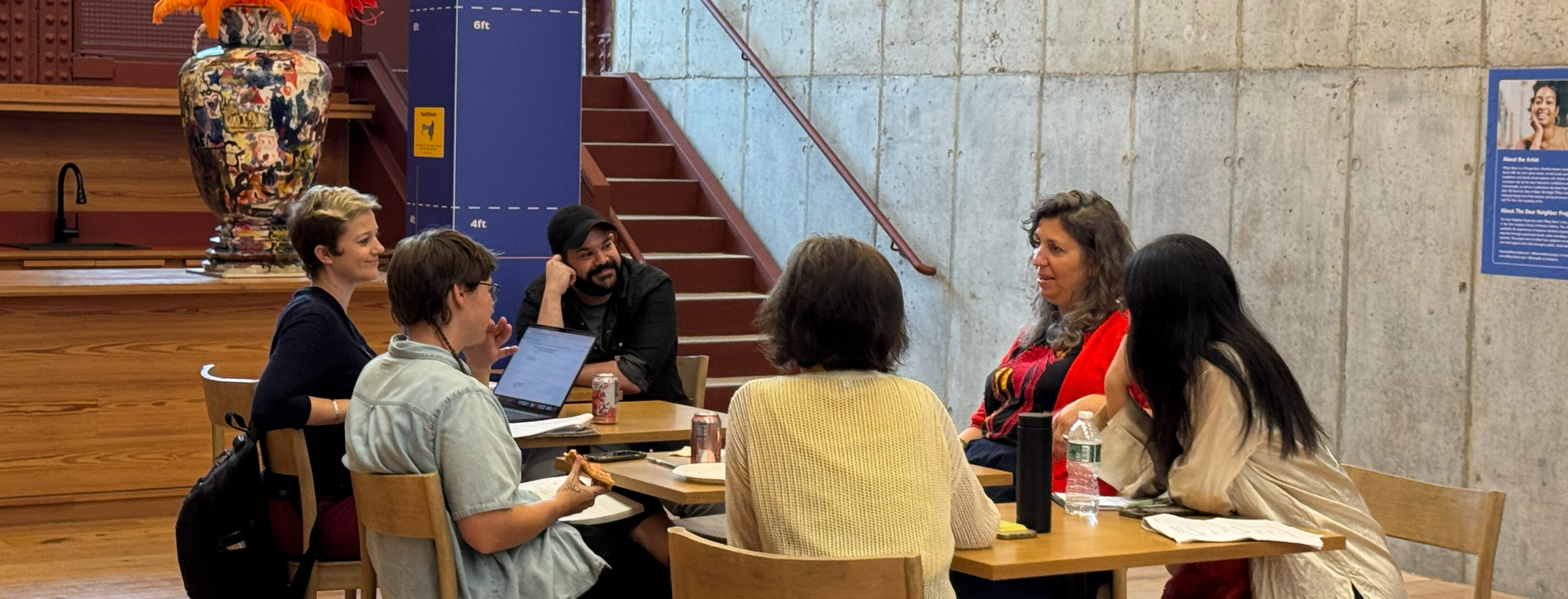
3. The skill/confidence feedback loop.
I began the weekend with two concepts already in mind: confidence is a useful skill, and skills can help build confidence. However, it wasn’t until observing this program that I understood the positive feedback loop produced by the interaction of both those ideas. The tools artists took away from this program—an “elevator pitch” to talk about their work, a compelling artist statement and bio, a framework to set goals and assess career progress—are all new skills that hopefully give a boost of confidence in undertaking new creative ventures.
This confidence, in turn, should be thought of as a skill in itself. In their applications, many of the applicants to this program expressed a desire for assurance that they were on the right track, or confirmation that their career and practice were progressing as they should be. However, because there is no one “right” path, especially not in an arts career, external assurance of this sort can be hard to come by. What artists can do is learn and arm themselves with information, and seek out areas for personal growth. All of this brings us back to skills, closing the feedback loop.
Understanding this loop is what emphasized to me that this program is much more than a weekend intensive and provides much more than one-off business skills. It starts, or strengthens, the positive interaction between current and future ability, one that spirals indefinitely into the future, with the skills the artists learn and the confidence those skills bring amplifying each other in return.
As a rationale for joining this program, actor and playwright Kareem Lucas said he hoped to “go from survival to abundance with the tools you all provide.” It is this internal abundance that this feedback loop provides. Combine this with a supportive community of collaborators, and it’s likely that it not only translates to external abundance, but that you have a cohort to celebrate with you when it does.
It was a joy to see these artists grow and to learn alongside them, and I wish them the very best in their endeavors. You can see future Artist as Entrepreneur programs here, and explore NYFA Learning’s other offerings here.
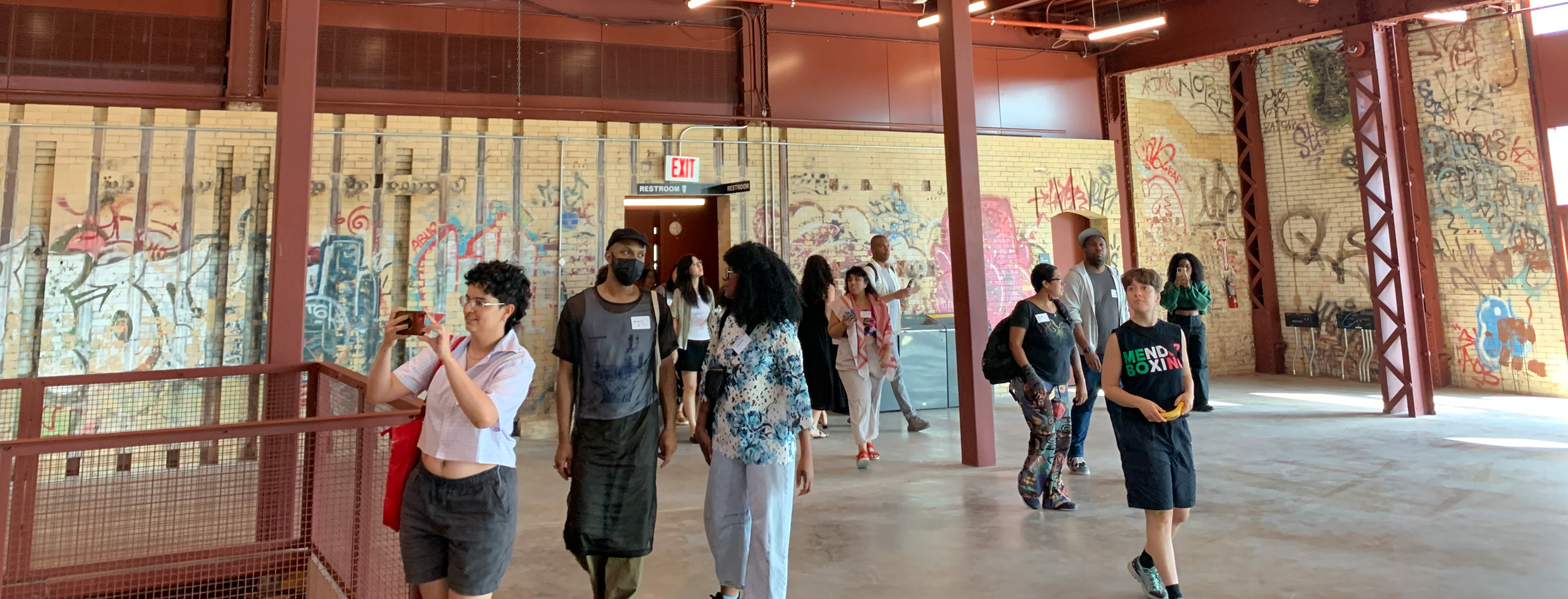
– Talia Czuchlewski, Princeton Internships in Civic Service (PICS) Intern
- Anonymous Was A Woman (AWAW) and New York Foundation for the Arts (NYFA) Announce 2025 Environmental Art Grants Recipients
- We Asked the 2025 Immigrant Artist Mentoring Program Participants: What’s One Piece of Career Advice You’d Give to Other Artists?
- New Exhibition “Courage, Valor, Mужество, Mужність, 勇气” Features 26 Artists from the 2024 Immigrant Artist Mentoring Program: San Antonio